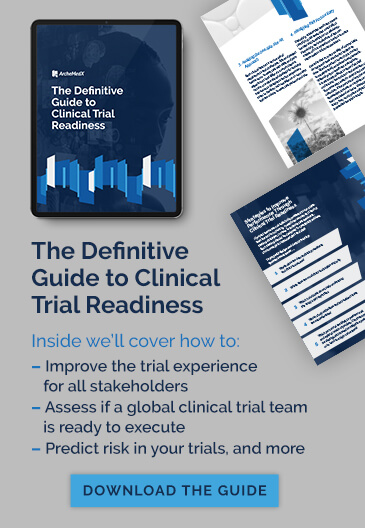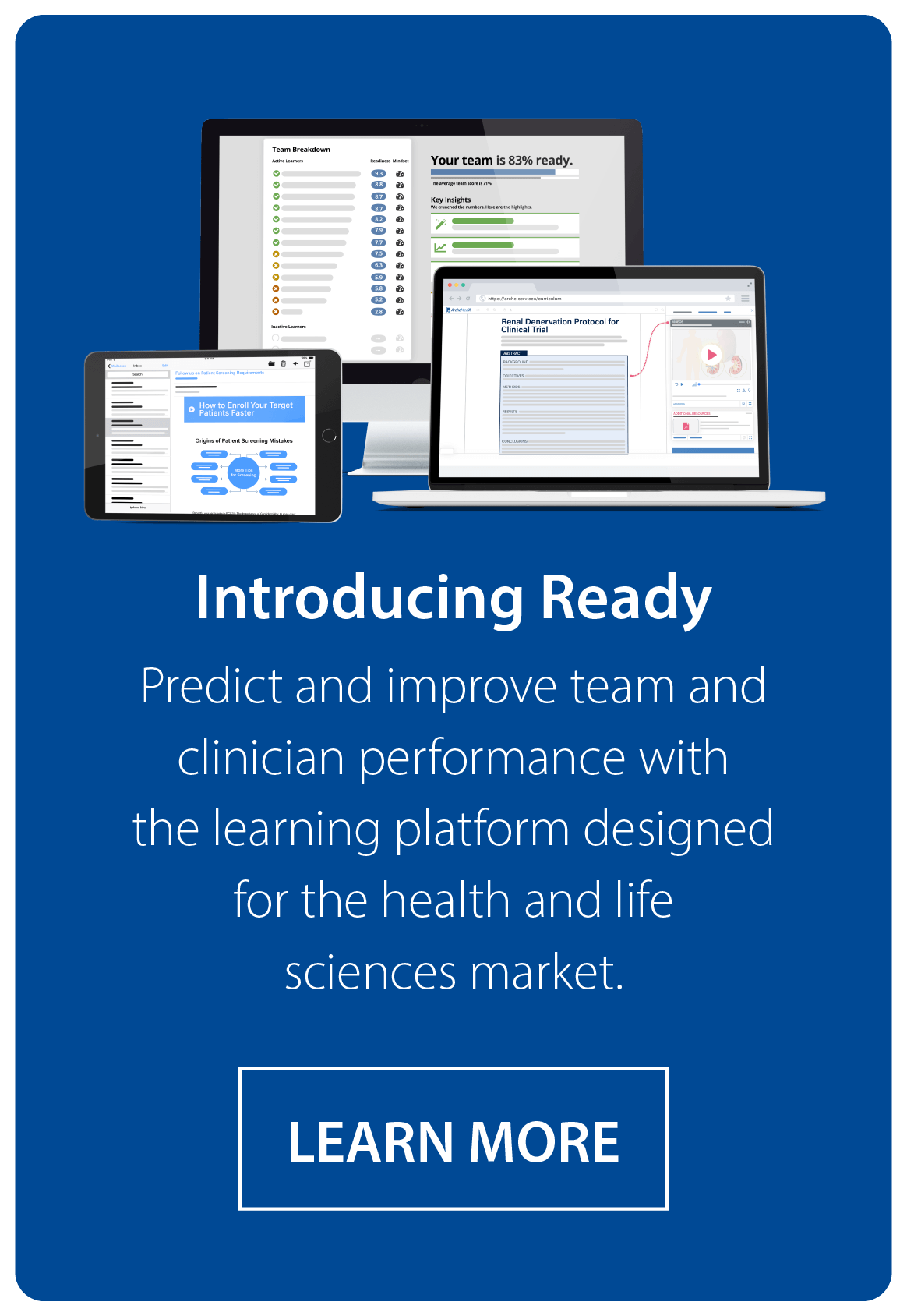How can we combat the sense of urgency our professional lives bring?
We are each burdened with greater responsibilities, fewer resources, and often untenable timelines. As the pace of our professional lives increases, it only seems natural that we should prioritize faster decision-making and faster action—in essence, the speed of our professional lives creates a constant sense of urgency that overwhelms our ability to think critically, to plan intentionally, and to reflect on what is truly important. For all of these reasons, it’s important to recall one of my two favorite quotes: “There is no bigger regret in life than watching people who will waste years, because they refuse to ‘waste’ minutes.”
I’m inclined to bet you a beer that if you are involved in clinical research you’ve felt these pressures, and likely succumbed to embrace approaches to your work that give you the sense of making progress, checking off items from your to-do lists, and fast(er) thinking, but in the end, struggling…
The problem of ‘fast thinking’
In his 2011 book, Thinking, Fast and Slow, Daniel Kahneman summarized nearly 40 years of research by proposing that in our increasingly complex world, we (adult humans) default to one of two modes of thinking. Fast thinking operates almost invisibly, guiding our everyday decisions with speed and simplicity—it’s akin to doing our jobs at 1.5x speed. However, this rapid processing can lead to oversights, especially in complex situations where nuanced analysis is required. In contrast, slow thinking is the methodical, effortful process of considering information. It’s the intentional reflection before arriving at a conclusion, the careful planning of a project, or the thoughtful learning from one’s experiences. In other words, while fast thinking can help us turn mundane and repeated tasks into low effort and rapid cognitive habits, this speed undermines our most critical work and responsibilities. And here’s the catch, Kahneman and others suggest we (adult humans) spend up to 90% of our lives in fast thinking mode.
Mind over motion
Embracing slow thinking offers countless advantages. As mentioned, it enables deeper understanding of complex issues, leading to more robust and sustainable solutions. In business, education, or our personal lives, slow thinking fosters creativity, strategic planning, and meaningful growth.
In the context of healthcare, slow thinking can mean the difference between a missed diagnosis and saving a life. And, in the context of clinical research, the benefits are every bit as meaningful. From trial design, to protocol planning, to patient screening, and nearly every complexity included within modern clinical trials, we benefit from more reflective and slower thinking.
Imagine a doctor quickly diagnosing a patient based on their most obvious and recognizable symptoms—a classic case of fast thinking. If the diagnosis is incorrect, the consequences could be dire. Now, picture that same doctor taking time to reflect on the patient’s complete medical history and evaluating a broader variety of symptoms, onset, severity—a slow thinking approach. This methodical process increases the likelihood of an accurate diagnosis and effective treatment plan.
Let’s consider three specific examples of fast thinking vs. slow thinking in clinical research:
A research team quickly concludes that a drug is ineffective based on initial trials. Through slow thinking, they revisit the trial design and realize that dosage timing influenced the drug’s efficacy. By adjusting the protocol to consider this factor, they move past their initial fast thinking tendencies, leading to a more effective design.
A researcher reactively decides to exclude elderly patients due to perceived risks without thoroughly considering individual differences. Slow thinking would encourage a pause to evaluate this fast decision, potentially leading to a more nuanced consideration of inclusion criterion that accounts for variance in elderly populations, thus enhancing the trial’s applicability and impact.
A research team habitually sets a two-week requirement that site staff attest to having read and completed training on the protocol, laboratory manual, and pharmacy manual before being greenlighted to enroll patients. Within 14 days, 10 sites completed the required training attestation. Within 90 days, only three sites have enrolled a single patient. A slow thinking research team would recognize that a “check-the-box” training requirement led to seven sites being unprepared and was a root cause of preventable trial delays.
In each case, incorporating slow thinking in clinical trial research is like giving researchers/site staff a clearer lens through which to view their work. By fostering a culture of slow thinking, we empower researchers to conduct more impactful clinical trials, to avoid delays, and to work faster.
Three tips to embrace slow thinking
The upsides of slow thinking are enormous, but in our world of greater responsibilities, fewer resources, and often untenable timelines, how do we embrace it? Over the years I’ve found three strategies most effective. I think of these as slow thinking for myself, my team, and my organization.
Slow thinking for myself: As a senior leader and a research scientist, I spend a lot of time doing solo work. On any given day I might spend hours in deep data analyses or research planning. These hours can often seem laborious and serve as a breeding ground for fast thinking and mental shortcuts. But this is when I rely most on a set of ‘nudges’ I’ve surrounded myself with to ensure I appropriately pause and reflect—think of this as my slow thinking ‘scaffold.’ Sitting on my desk at all times are two books “Thinking, Fast and Slow” by Kahneman (as mentioned above) and “Think Again: The Power of Knowing What You Don’t Know” by Adam Grant. These books, along with a few clever post-it notes, branded mugs, and carefully curated bookmarks, are omnipresent reminders that constantly challenge me to rethink my thinking.
Slow thinking for my team: As a leader within a diverse and dispersed team, I spend a lot of time guiding teams through project planning and project execution. And once you layer in the complexity of team dynamics, slow thinking can feel even more challenging. But as we now understand, it is worth it! To encourage slow thinking in teams, I like to ask two simple questions, “Why not?” and/or “What else?” These non-invasive questions ‘nudge’ the team to intentionally rethink their assumptions and to embrace different perspectives.
Slow thinking for my organization: As an organizational leader, one of my most important responsibilities is to support a culture that embraces slow thinking. I think of this as a use case for ‘meta’ slow thinking. At an organizational level, it is important to apply slow thinking to ensure a culture of slow thinking—very meta. Slow thinking at the organizational level is rarely a quick fix, it is a strategic process of developing a culture of curiosity and reflection and psychological safety to challenge assumptions and the status quo—but again, it is worth it!
At ArcheMedX, we talk about slow thinking during interviews, we ask about it during reference checks, and we integrate it into onboarding. Slow thinking is an integral part of our DNA, but it didn’t happen overnight.
Ultimately, the interplay between fast and slow thinking is a delicate balance, with each having its place. Fast thinking helps us get things done, but only after slow thinking has ironed out the wrinkles. Our key take-away here aligns perfectly with my second favorite quote, “If you don’t have the time to do it right, when will you have the time to do it over?”
Related Post
Reflections from DIA and BIO: What Trial Leaders Are Really Saying
I. Introduction: Two Conferences, One Reality This past week at DIA and BIO offered two…
Joel Selzer
What We Think We Know: How Overconfidence Derails Clinical Trials
In clinical research, where accuracy, coordination, and compliance are non-negotiable, the greatest threat isn’t always…

Brian S McGowan, PhD
Why Mindset Matters in Clinical Research
Clinical trials professionals face a host of challenges: for some, it’s the complexity in protocol…




